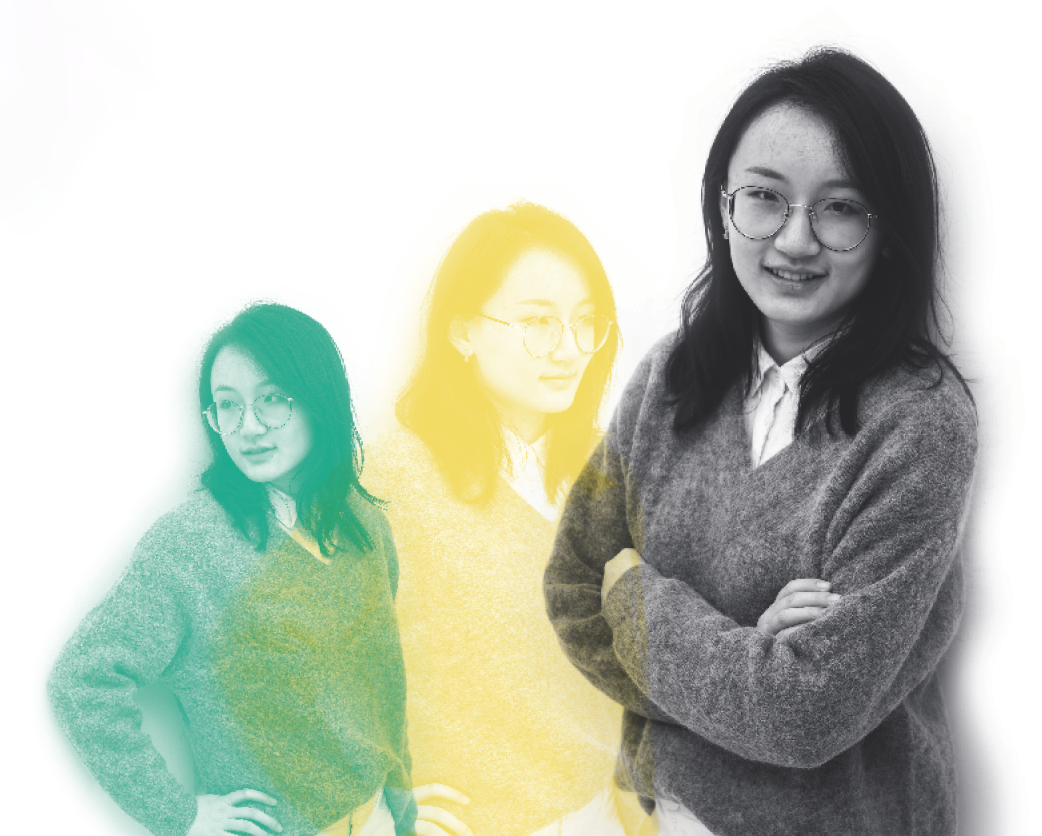
Final year project
Improving vegetarian’s dining experience by a NIR handheld ingredient detector [Read more]
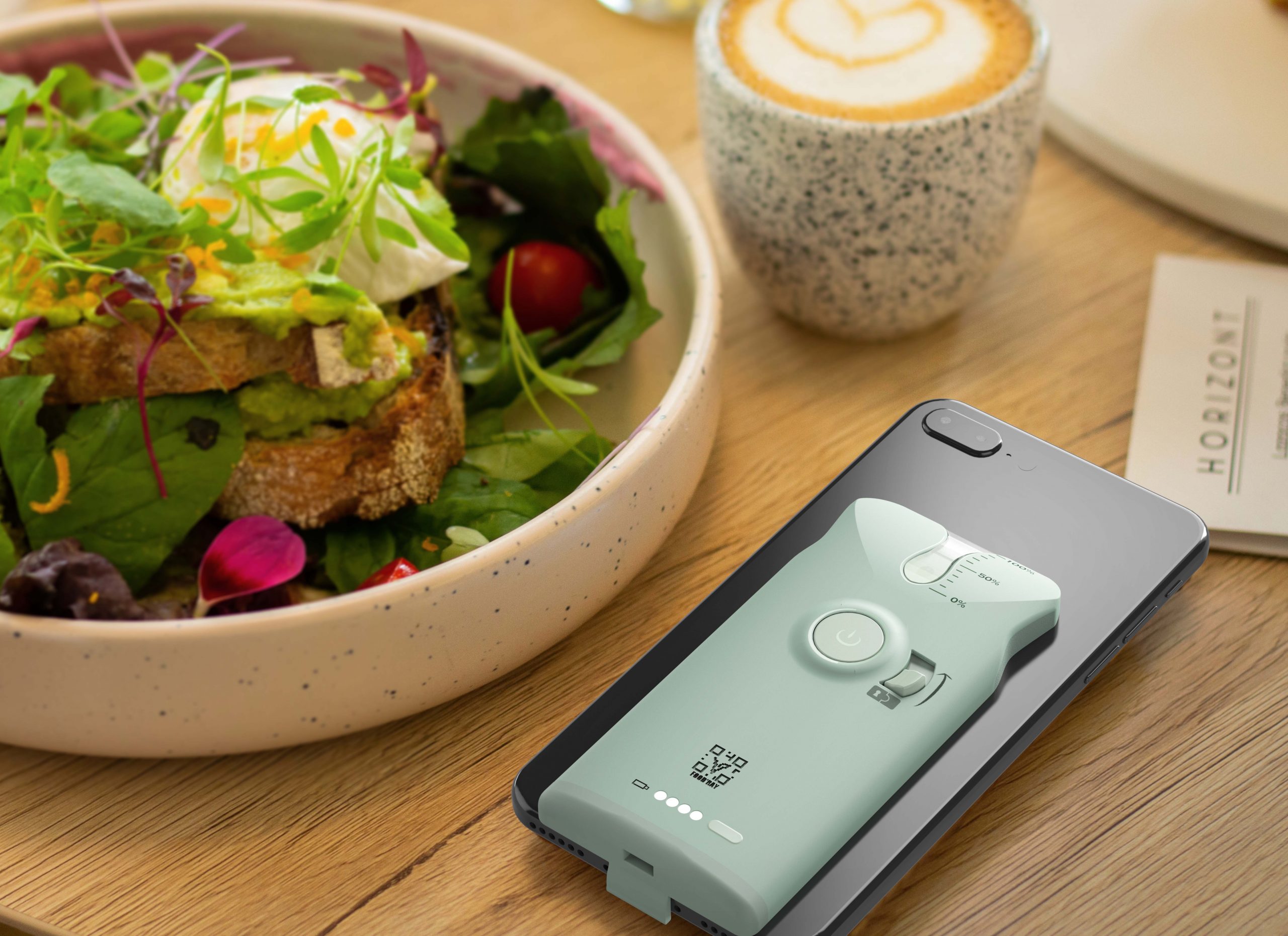
Food'Ray device on a dinning table - final year project
There are around 10% of people who are vegetarian worldwide. According to studies, vegetarians experience difficulties when they prepare food, dine out, especially in a foreign location, and socialise with friends. Food’Ray consists of a device and an app to guide vegetarians through a better dining experience both before and after ordering food. Food’Ray also provides a vegetarian community to share recommended food choices.
The image suggests a ready-to-use device. Users are able to identify the number of ingredients in their dishes by using Near-infrared (NIR) spectroscopy technology without physically touching the food.
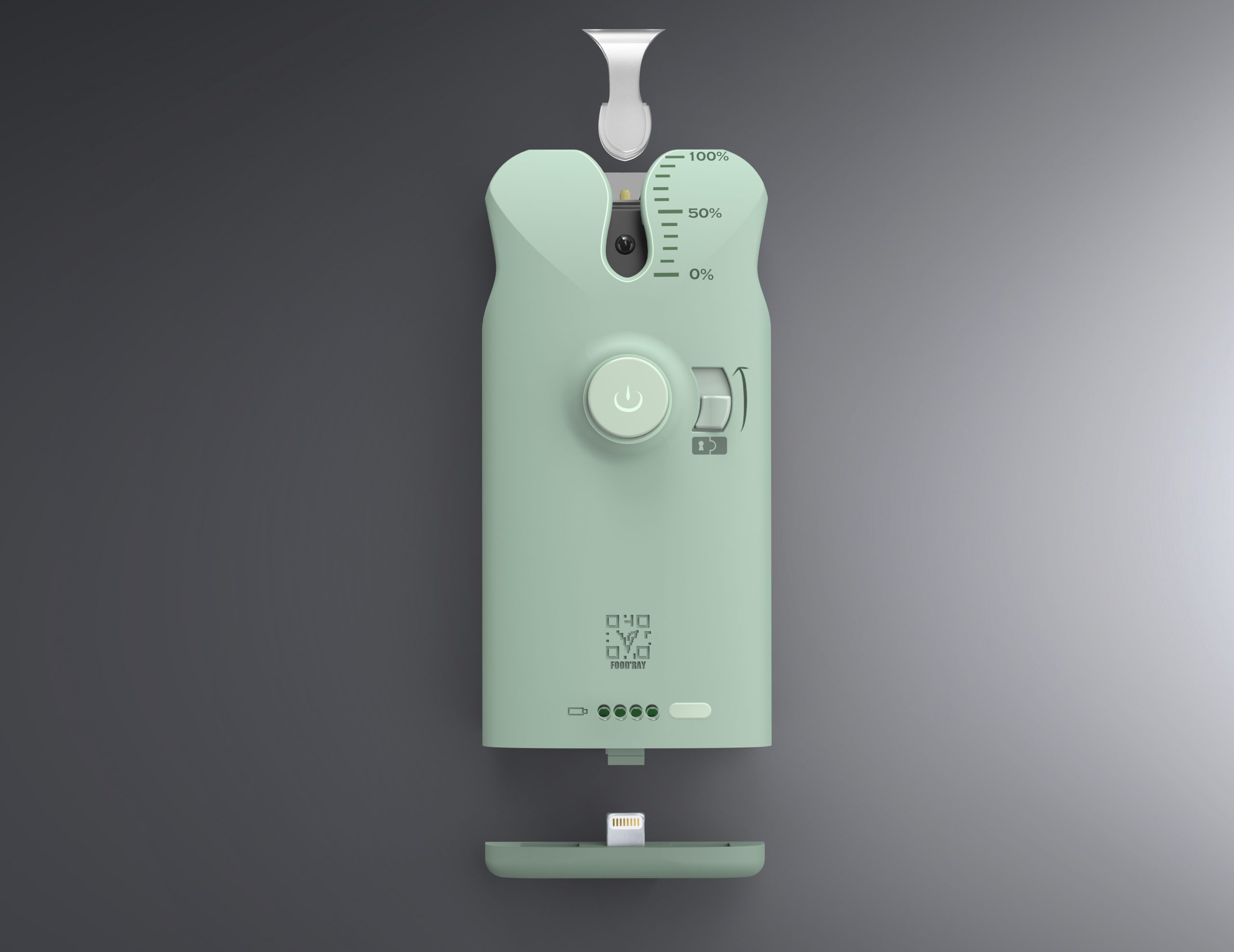
Exploded top view - final year project
An exploded top view illustrates how parts on this device are allocated. The substitution part at the bottom allows customisation subject to the end user's phone type (Lightning or Type-C). I have installed phone charging functionality. It can be initiated by pressing the button at the bottom of the device and the battery status will also be shown at the side. The safety latch beside the main power button is designed to avoid unintended usage in a pocket. The scale at the top provides a quicker reading for users to know the initial result of the NIR food scanning.
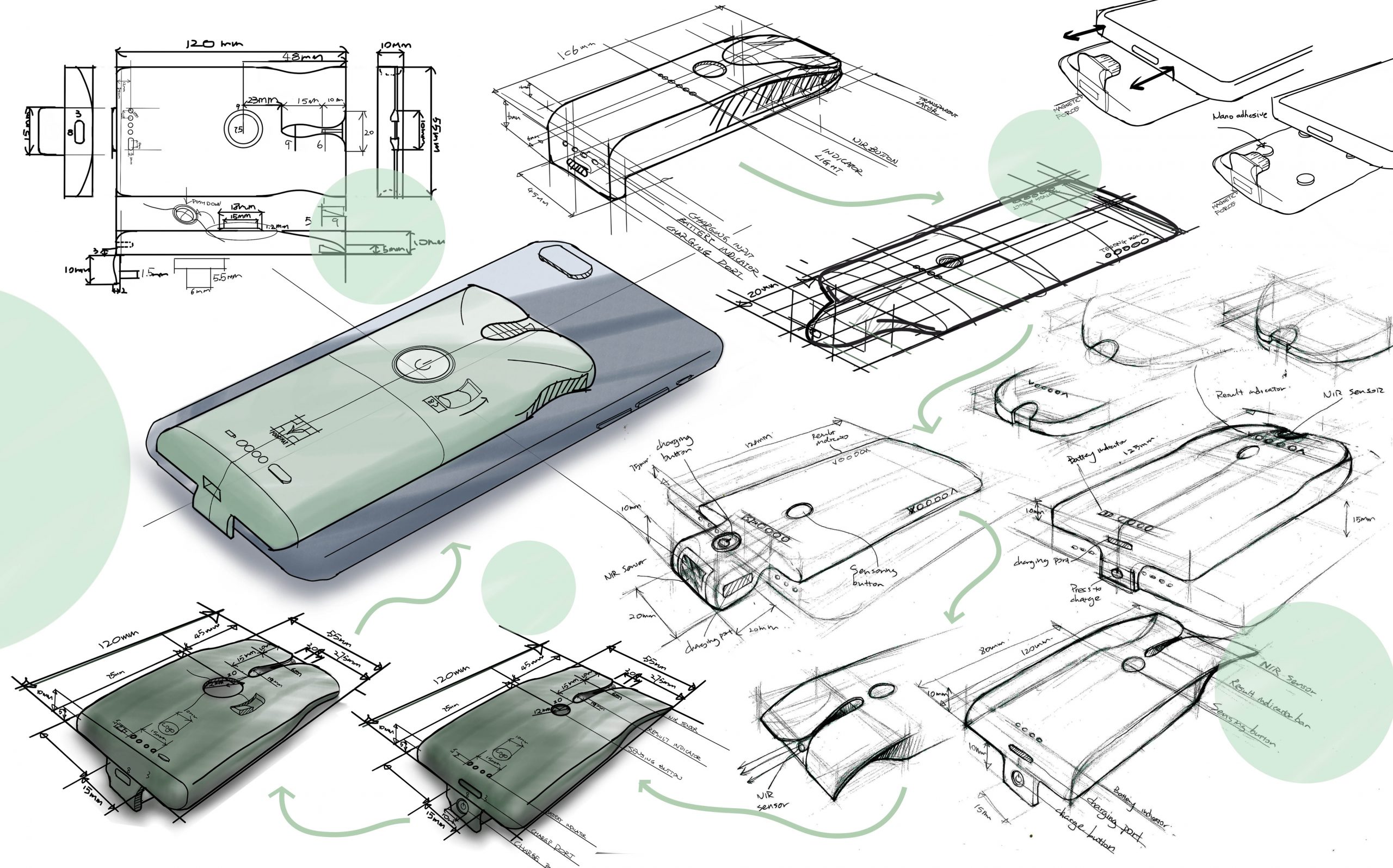
Developmental sketches - final year project
A selection of developmental sketches. Portable and ergonomically friendly were the main criteria for selecting the final design.
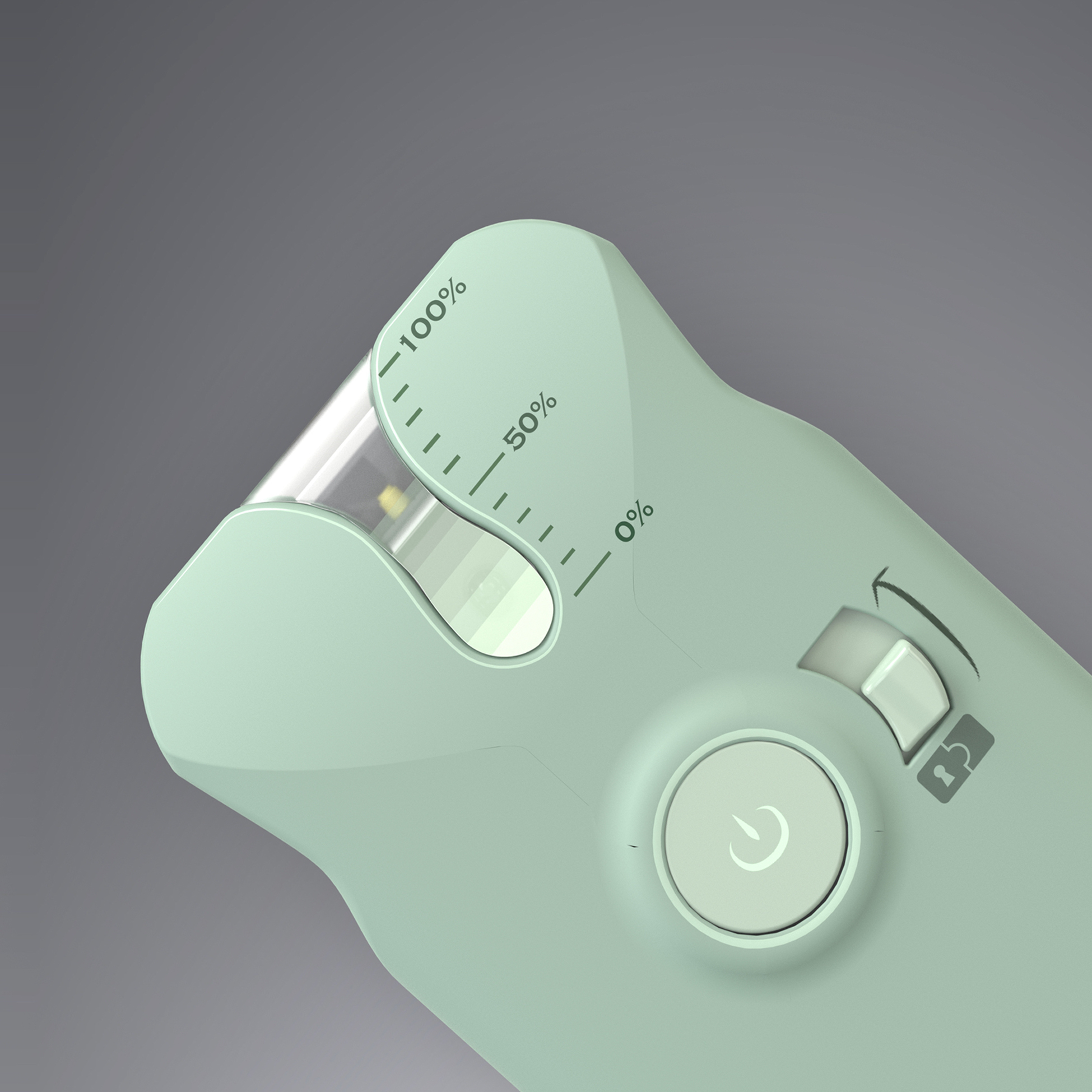
Result indicator - final year project
Initial results generated by food scanning will be displayed on the device for easier access. A more detailed ingredient report will be provided on the app for future reference.
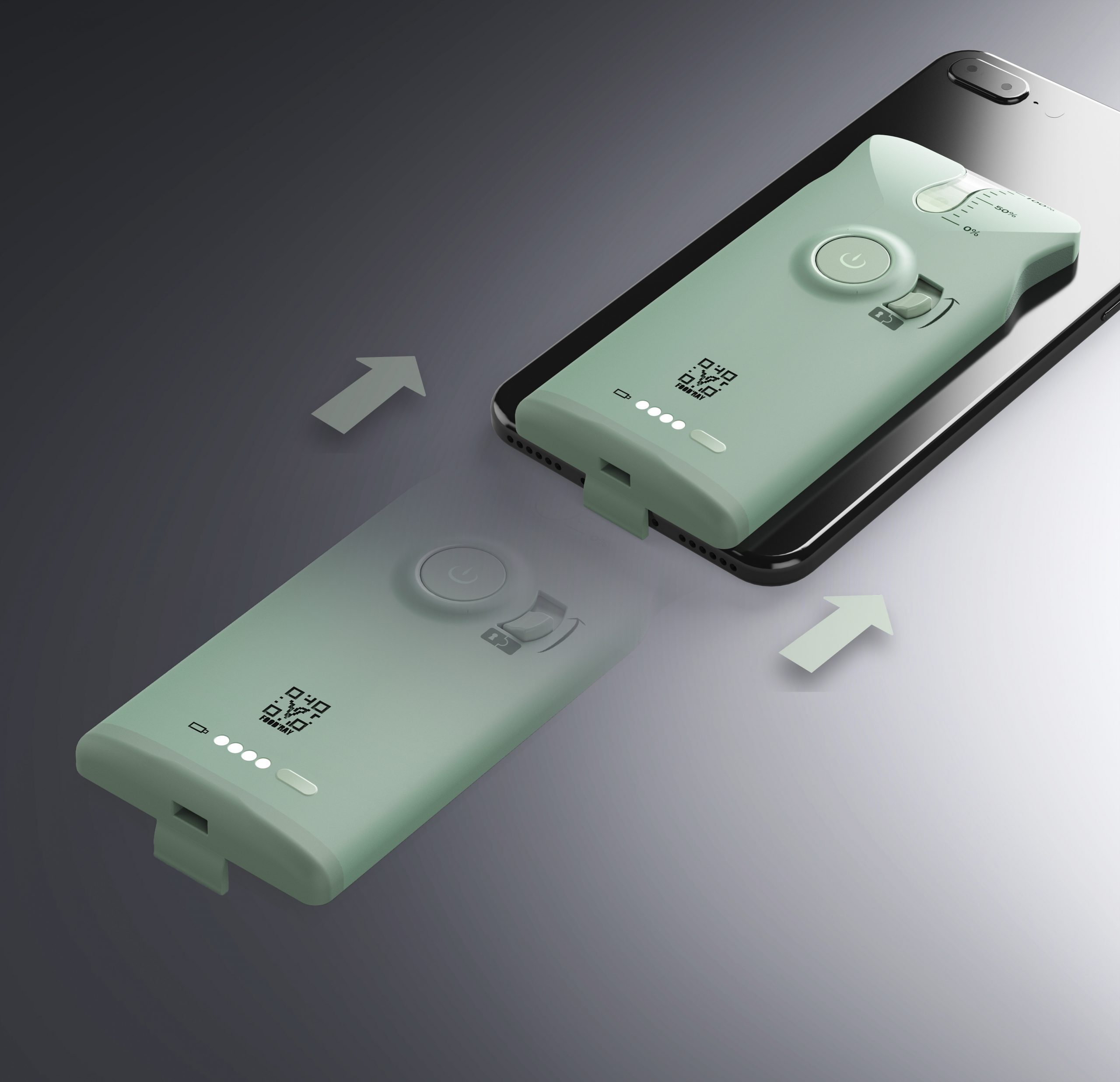
Phone charging functionality - final year project
The device can be attached to the user’s phone and provide a charging functionality. The added benefit of charging encourages users to make Food’Ray an essential part of their routine.
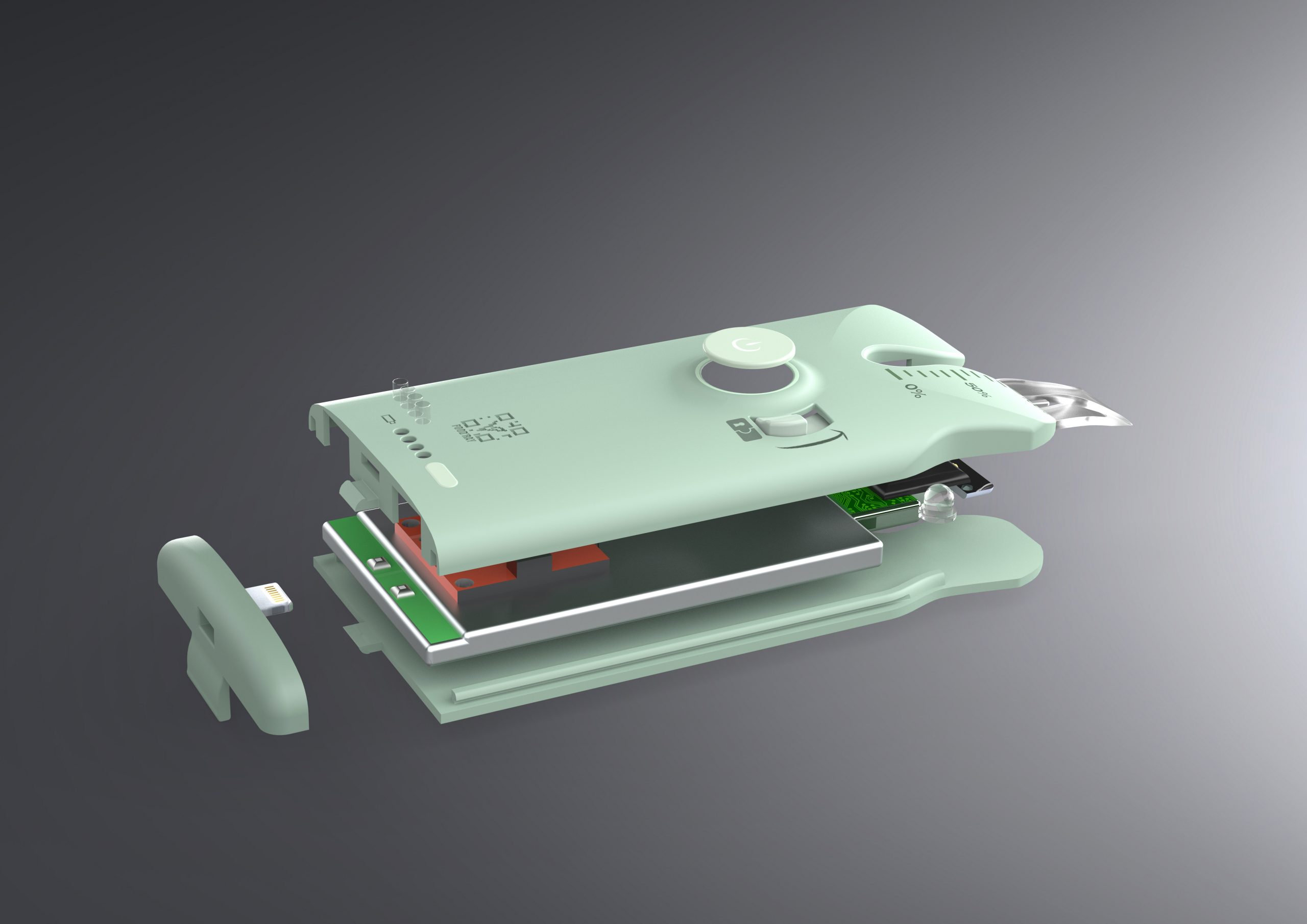
Internal components - final year project
Internal components used for the Food'Ray device were shown on the image.
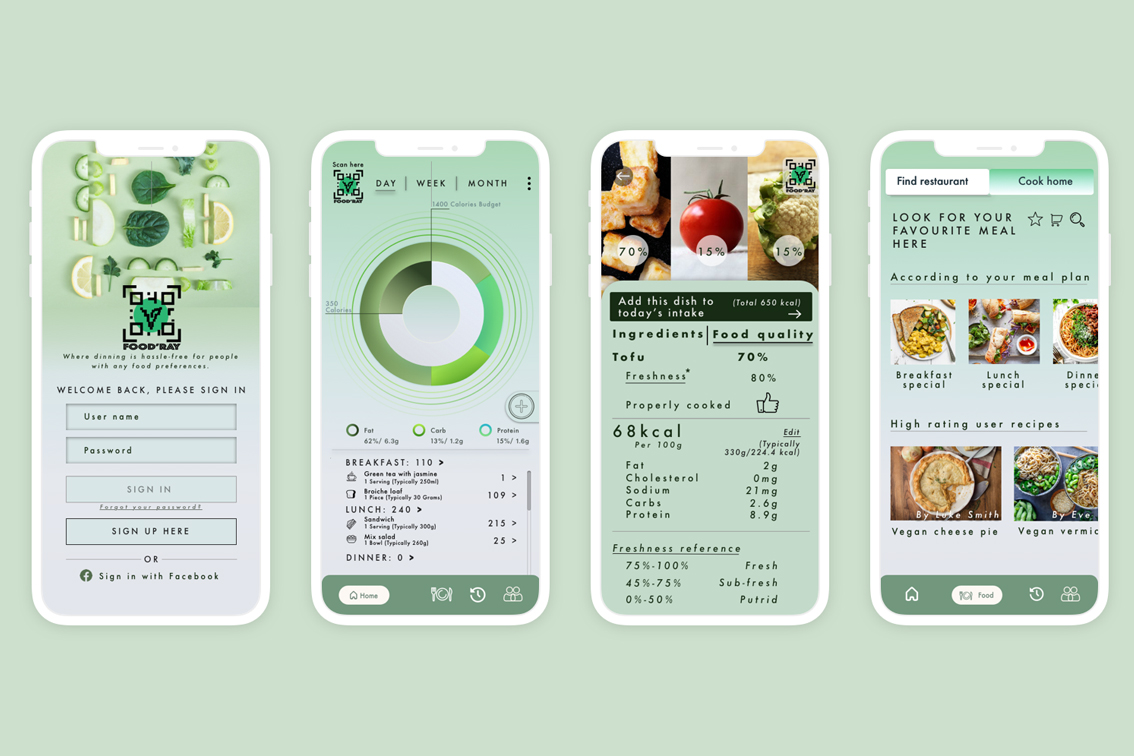
App design - final year project
The Food’Ray App displays detailed food reports and tailored recipes to enhance their wellbeing. It also provides menu translation and restaurant search to improve their dining experience.
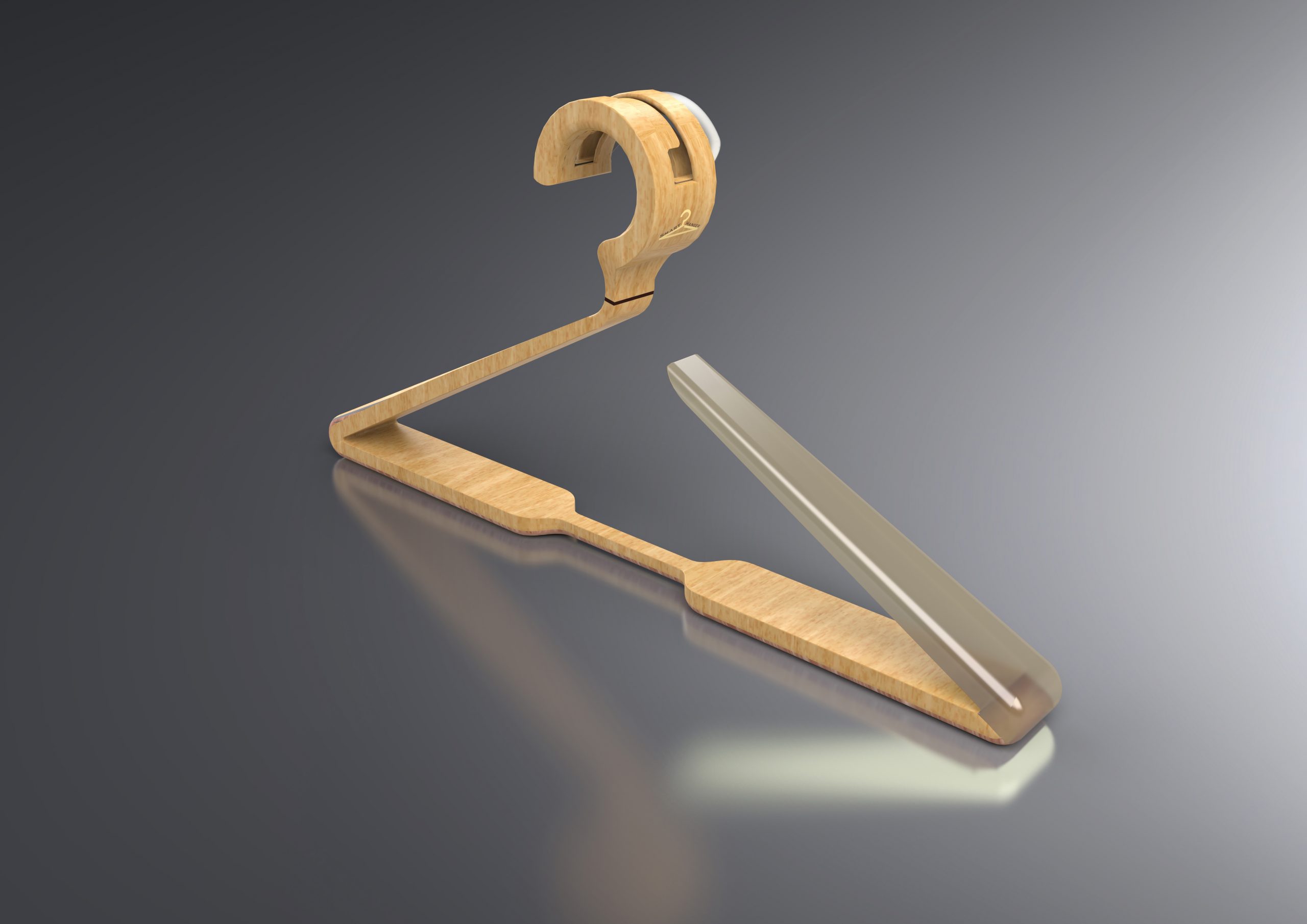
Live project
Smart Hanger is designed to encourage maximised usage of people’s current garment to reduce shopping desire and therefore, clothing waste. Unworn clothing needs to be made aware of and utilised. Smart Hanger incorporates the physical product with an app to show users their closet in a clearer and a more interactive way.
Xiaohan Liu
I am interested in exploring the cognitive aspect of design, which allows me to think in a user-centred perspective for resolving potential problems.
I enjoy improving user experience and conducting user research. My final year project Food'Ray consists of a device and an app to guide vegetarians through a better dining experience both before and after ordering food. Food'Ray also provides a vegetarian community to share the recommended food choices. I want to embark on a career in user experience design to participate in engaging projects and produce user-centred products.
Final year project
Improving vegetarian’s dining experience by a NIR handheld ingredient detector
Awards
At UXathon18 at Loughborough University, I received the Best Client Relationship Award by HKU MBA. I worked with a team of five students to create design solutions for an enterprising team at Hong Kong University. My active engagement and constant communication with the team in Hong Kong throughout the contesting period prompt the result of this award.
Experience
I interned at Goldman Sachs during summer 2019. I managed independently a 10-week project to improve the user experience within the Engineering division. The project included two rounds of user testing sessions and a redesign of the interface for an internal feedback system using Sketch. I also liaised with senior management at the New York office and collaborate with various teams in different divisions to progress the project. In the end, I presented my research proposal to the global UX team consisting of 50 people in three locations.